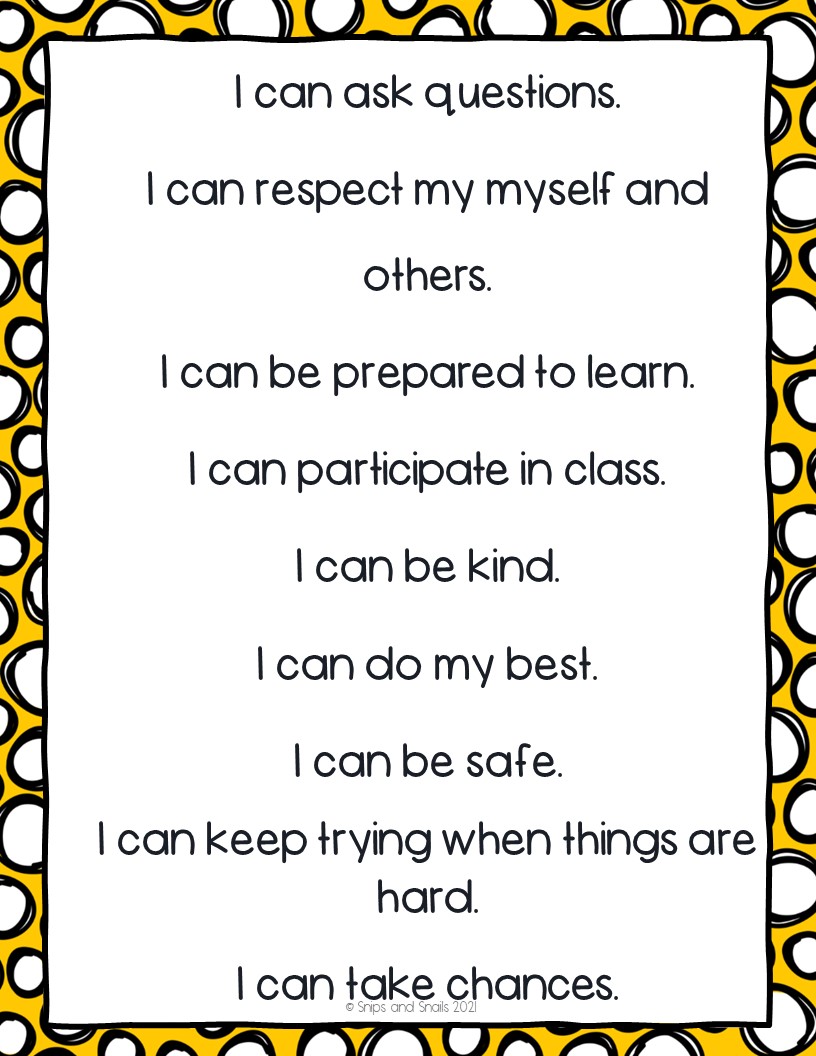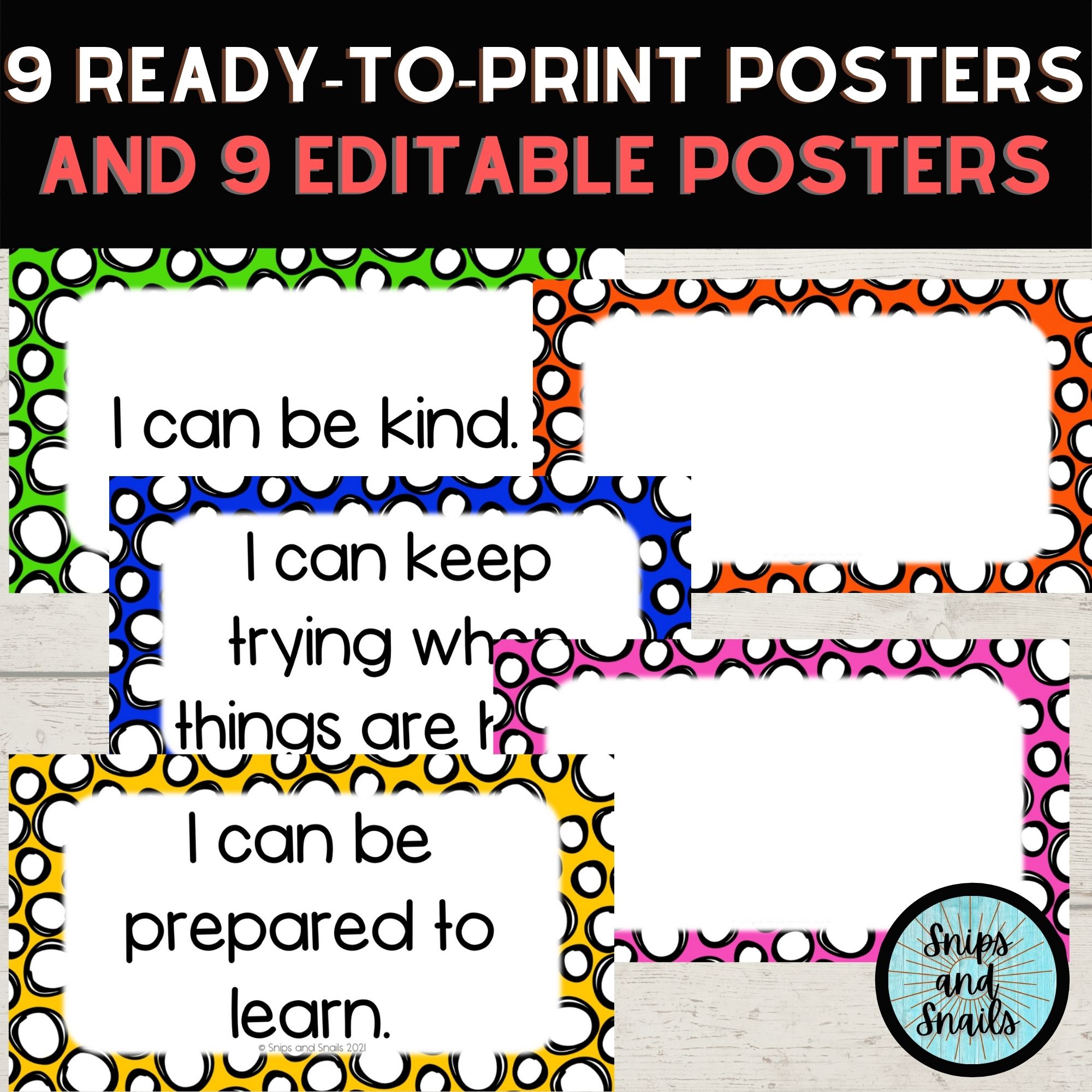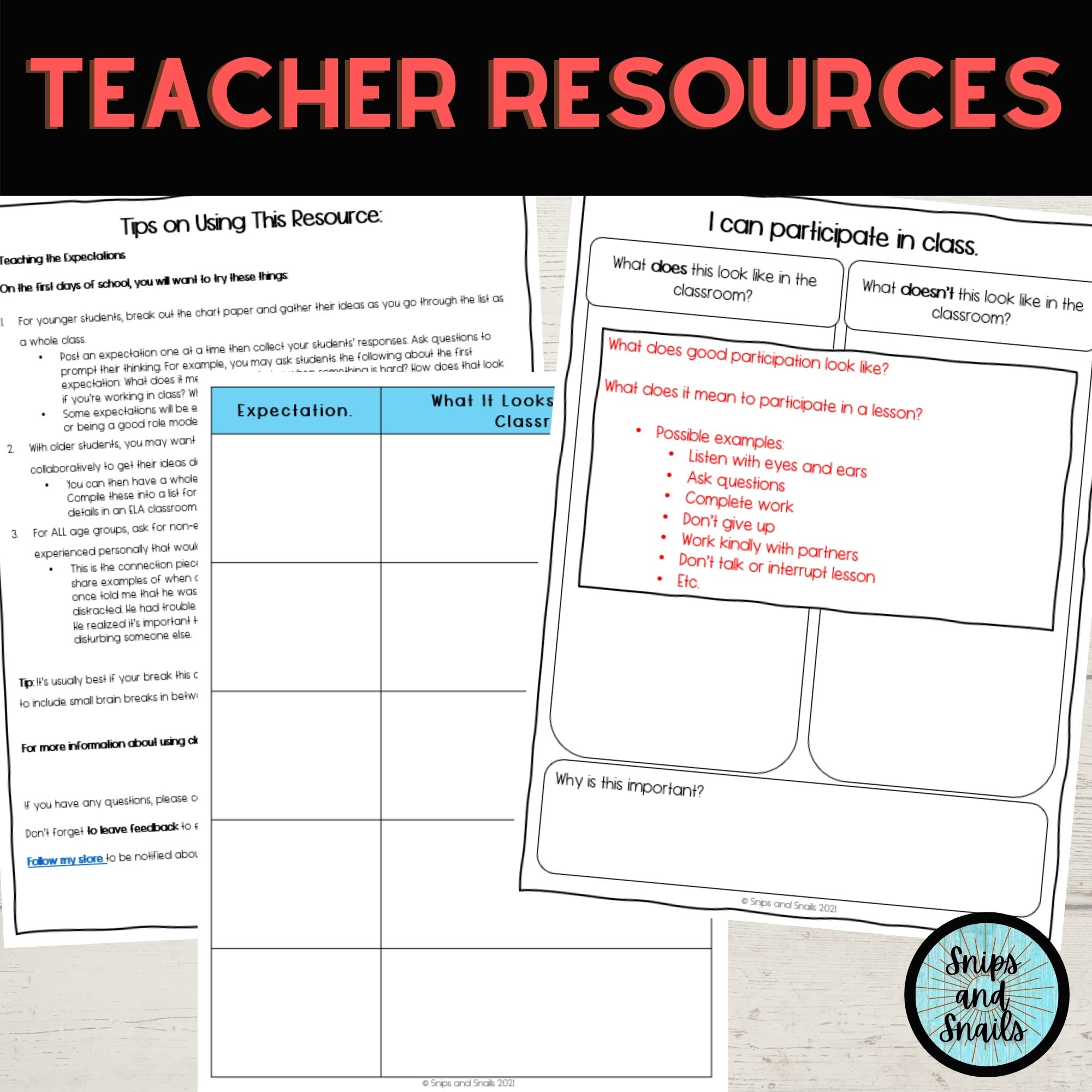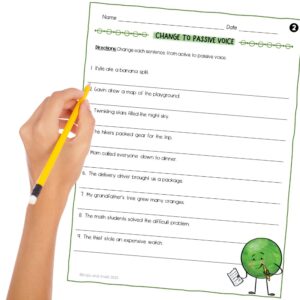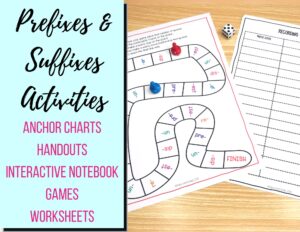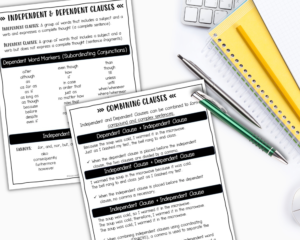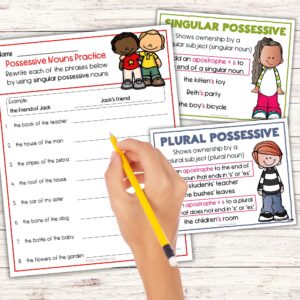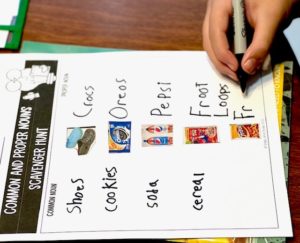
Why should you choose to set classroom expectations instead of classroom rules?
No classroom runs efficiently without classroom rules, right?
As teachers, we know that having rules for student behavior is a foundation of good classroom management. The first days of school are always spent teaching and reviewing these rules that are supposed to enable our classrooms to flow more smoothly during the school year.
But then reality hits. It doesn’t take long for a student to break one of those rules and for consequences to begin. Then another student does the same thing. And on…and on…and on.
How do you stop this cycle? How do you get students to behave appropriately in class? How do you do all of this and save your sanity? It may not be as hard as you think. Read on!
Change Your Language to Create a Positive Classroom Culture
Language matters. The word “rules” alone has a negative connotation. It feels restricting and authoritarian. Rules tell us what we can’t do, which is almost like throwing down a dare to some students. Truly, we all know adults who like to test boundaries. No jeans at work? Challenge accepted! You pick out white denim pants instead of blue because, technically, they aren’t really “jeans”, right?
It’s human nature to test boundaries. Students are no different.
Expectations, on the other hand, communicate a desired behavior. The dictionary defines expectations as “a strong belief that something will happen or be the case in the future” and “a belief that someone will or should achieve something.” See the difference?
Expectations are positive in nature and develop student responsibility. They point to personality traits that we hope to develop in ourselves and in our students. Expectations presents the opportunity for students to grow towards a behavior instead of simply not break a rule (or get caught breaking one.
Reframing your communication for students sets the tone for a positive culture in your classroom.

How Do Expectations in the Classroom Benefit You?
- You’ll get the behavior results you want while empowering students to take more ownership of their actions.
- You’ll work on building student character as opposed to compliance.
- You build a positive classroom culture.
- You will emphasize a growth mindset around personal development and not just academics.
“I Can” Classroom Expectations
I’ve played around with the wording of expectations over the years, and what I’ve settled on are “I Can” statements. This language highlights the growth mindset I want my students to have. It showcases that the idea of progress over progression.
When presented with an “I Am” statement, for example, some students just aren’t there, yet, and so can feel the statement doesn’t apply to them. “I Can”, though, allows them to not be at the destination, yet, while celebrating their journey there.
Good expectations are overarching and are perfect discussion starters for the first days of school (more on that in the next section). Rules can be very specific, e.g. I will not talk while the teacher is talking, and you could need literally dozens to cover all misbehaviors that arise during the year. A good expectation covers all of those unforeseen problems.
Some “I Can” Expectations I Use In My Classroom Are:
- I can keep trying even when things are hard.
- Let’s be honest, students tend to shut down when facing challenges in the classroom. This statement allows for the fact that not everything will be easy and you’re more focused on their effort and progress than their perfection.
- I can respect myself and others.
- This expectation covers so many areas of student behavior.
- I can be a good role model.
- Students want others to see them in a good light. At the core, they want to be proud of themselves at the end of the day.
- I can be safe.
- This is an excellent place to discuss being safe on school grounds.
- I can do my best.
- Remember, progress over perfection!
- I can ask for help when I need it.
- How many times have we heard from parents that a child didn’t ask for help because they didn’t know they could? Students can be afraid to admit not knowing something, and sometimes they truly don’t understand when and how to ask for help.
Click on the list to download the poster and matrix for FREE!
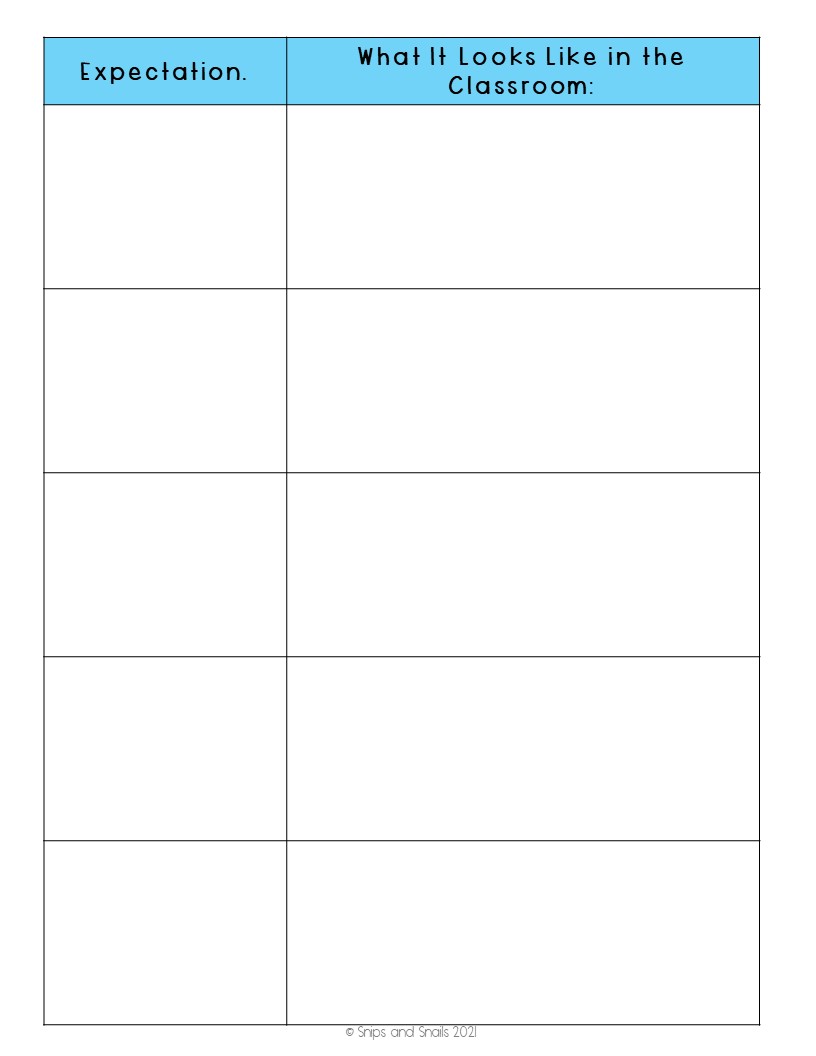
Teaching the Expectations
Begin by helping students see how the expectations benefit them. You know the old saying, “What’s in it for me?” Well, it’s as true for children as it is for adults. For some students, avoiding consequences is enough to keep their behavior in check. But for many, the “why” behind the expectation is more important.
A highly effective way to review expectations with your students is to have the class collaborate on just what each one ‘looks and sounds like’ in your classroom. Then have them make a connection to it.
On the first days of school, you will want to try these things:
- For younger students, break out the chart paper and gather their ideas as you go through the list as a whole class.
- Post an expectation one at a time then collect your students’ responses. Ask questions to prompt their thinking. For example, you may ask students the following about the first expectation: What does it mean to keep trying when something is hard? How does that look if you’re working in class? Why would you not want to give up?
- Some expectations will be easier to tackle than others. Topics like respecting self and others or being a good role model will take longer.
- With older students, you may want to introduce each expectation then have them work collaboratively to get their ideas down on paper.
- You can then have a whole group sharing session where you document the responses. Compile these into a list for each expectation. (P.S.-this is a great way to hit on main idea and details in an ELA classroom.)
- For ALL age groups, ask for non-examples, as well. Let students share what they’ve seen or experienced personally that would not be living up to the expectation.
- This is the connection piece! It should be no surprise that even the youngest students can share examples of when a behavior in class affected them.
Tip: It’s usually best if your break this activity up. Even if you plan to cover all expectations in one day, try to include small brain breaks in between each discussion.

Post the Results!
Once you have your charts completed, post the results in your classroom. I would organize and type the examples onto a matrix page to display in the classroom. The chart was even shared with parents with the explanation that the students helped define the expectations as a group. My school would print this poster-sized for me to use in the classroom, but you can choose to print this out on regular-sized paper, as well. Colored pages are great eye-catchers!
Revisiting Classroom Expectations Throughout the Year
Once you’ve gone through these steps, there will always come a time when expectations need to be revisited. The posters become essential in reviewing the expectations throughout the year when the need arises. Additionally, if you and your students find the need to add to, or adjust, your chart, DO IT! This actively demonstrates that we learn new things all the time and being flexible is a positive trait.
If you have to address a student’s behavior, direct them to the expectations (and the chart you created, if it’s displayed) and ask them to reflect on which expectations they think they didn’t achieve and how can they make a better choice next time. Consequences may need to be given out, but self-reflection is key to helping to ensure the behavior isn’t repeated.

If misbehavior proves to be a challenge for some students, try goal-setting for improved behavior.
Try it Out!
Ready to replace your rules with expectations? Get started with some simple steps.
- Look at the rules you already have. Ask yourself if they can be changed to reflect an “I Can” statement.
- Are any of your rules too narrow? Can they be included under a broader term like “respect” or “kindness”. Then ditch the old rule and write an expectation it can fall under.
- Plan to introduce and discuss your expectations with students. (See the ‘Teaching Your Expectations’ section above).
Don’t have the time to put it all together on your own? Check out this resource for everything you need to effectively implement this plan in your classroom right away.
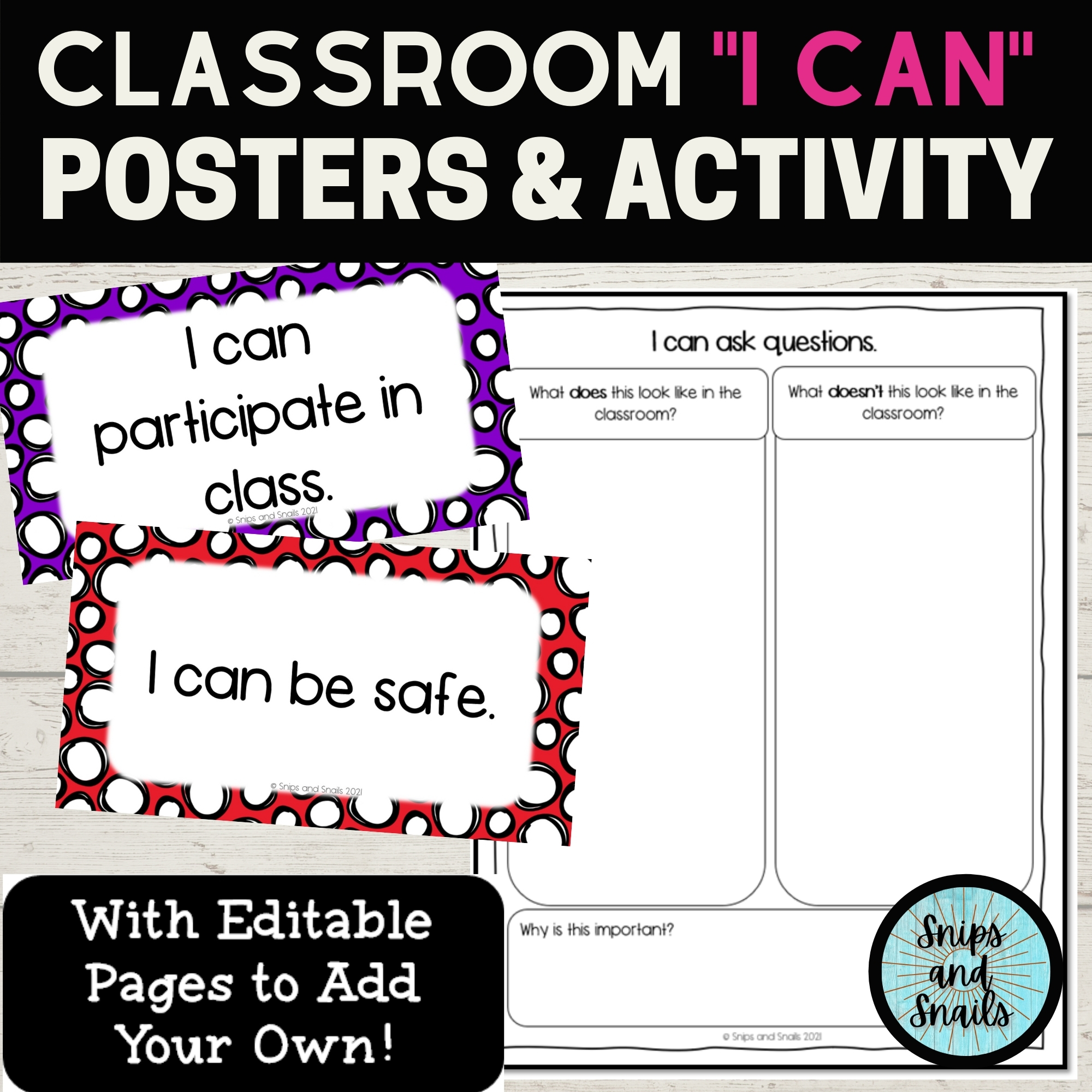
Don’t forget to join my mailing list for blog updates, freebies, and special offers!

